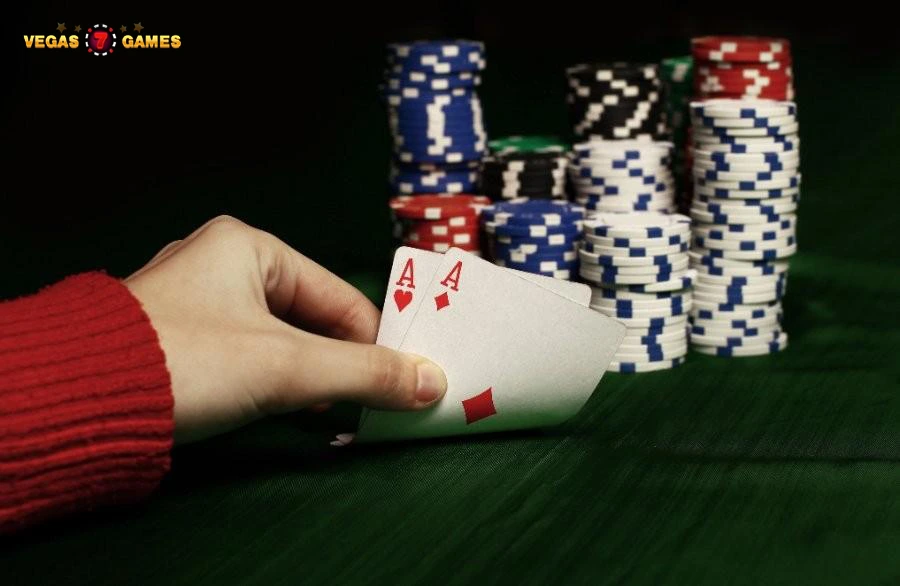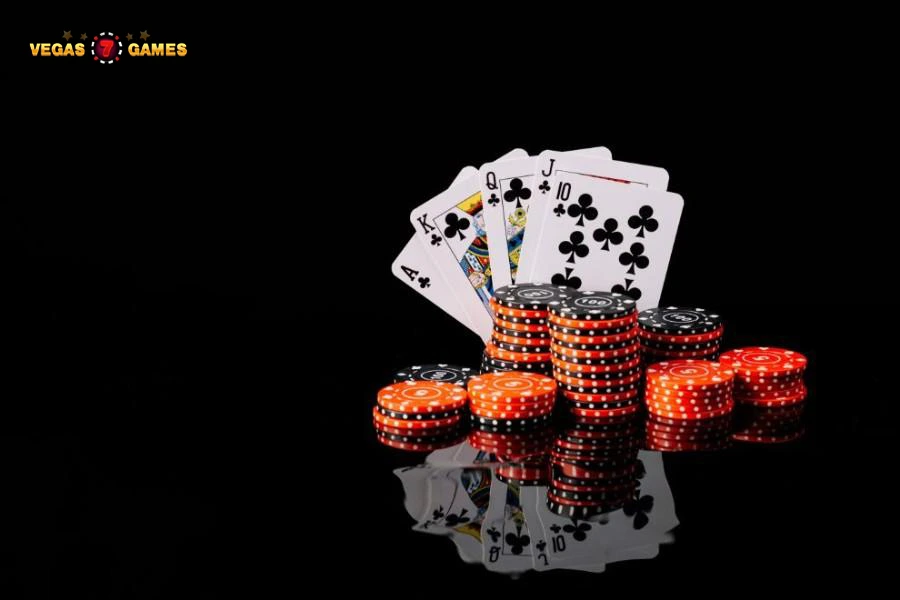Blackjack table, often referred to as 21, stands as a pillar in the world of casino gaming, renowned for its harmonious balance of straightforward rules and sophisticated strategy. This game has captivated a global audience, attracting players with its easily graspable fundamentals that pave the way for deeper, strategic gameplay.
Seasoned players find allure in its challenges, and the advantageous blackjack odds table it offers. Moreover, its prominent representation in popular culture has only amplified its allure.
In this guide, we endeavor to unfold the layers of blackjack, offering a detailed exploration of its rules and nuances. We aim to enrich your understanding with advanced strategies and delve into the psychological aspects that influence gameplay. Our journey begins with an introduction to the alluring world of the blackjack table rules game.
Understanding the Basics of Blackjack
In blackjack, the main goal is to beat the dealer’s hand without going over 21. Players strive to have a hand value closer to 21 than the dealer’s. If a player’s hand exceeds 21, it’s called ‘busting,’ resulting in an immediate loss. Due to its popularity, several online casino platforms offer this gambling option.
Card Values and Hand Rankings
The value of cards in blackjack table for sale is straightforward. Numbered cards (2 through 10) hold their face value. Face cards, including Kings, Queens, and Jacks, are each valued at 10. Aces are versatile, worth either 1 or 11, which benefits the player’s hand more. The best hand, known as ‘Blackjack,’ consists of an Ace and any card with a value of 10, adding up to 21.
The Layout and Equipment of a Blackjack Table
Blackjack tables are typically semi-circular, accommodating 6 to 7 players. Each player has a specific area for placing bets. The dealer stands on the straight side of the table, with the card-dispensing shoe and chip tray positioned in front. The number of decks used ranges from one to eight standard 52-card decks.
Basic Rules: Dealing, Hits, Stands, Double Downs, and Splits
At the start of a game, each player, including the dealer, receives two cards. The dealer has one card face down, known as the ‘hole’ card. Players can ‘hit,’ taking additional cards to improve their hands.
Alternatively, they can ‘stand,’ keeping their current total and ending their turn. ‘Double downs’ allow players to double their initial bet and receive one more card, after which they must stand. A player with a pair can split it into two hands with separate bets and play them independently.
These fundamental rules form the bedrock of blackjack, serving as a basis for more advanced strategies and gaming sweepstakes variations.
Advanced Strategies for Winning at Blackjack
Basic Strategy
Given the player’s and dealer’s cards, this method is a mathematically optimal way to play every hand. This blackjack strategy table minimizes the house edge and increases the player’s chances of winning.
It involves a set of rules depending on your hand and the dealer’s up card. Using basic strategy charts or cards can help players make these decisions.
Card Counting Techniques
Card counting emerges as a strategic tool in blackjack, designed to gauge the likely advantage in the upcoming hand for either the player or the dealer. This method transcends memorization of each card; it’s the art of maintaining a mental tally of the deck’s composition in high and low-value cards.
The prevalent system employed is the Hi-Lo strategy. In this approach, cards numbered 2 to 6 are assigned a value of +1, the neutral cards 7 to 9 hold a value of 0, and the high cards, including 10s, face cards, and aces, are marked as -1. A positive count signals a deck rich in favorable cards, prompting players to increase their bets, capitalizing on the tilted blackjack odds table in their favor. These techniques do not apply to many other casino games.
Betting Strategies: When to Bet High and Low
Effective betting strategies in casino blackjack table revolve around adjusting bet sizes based on the perceived odds. When using card counting, players should increase their bets when the count is high (indicating a higher concentration of 10s and aces in the deck) and decrease them when it is low.
This approach aims to maximize winnings during favorable decks and minimize losses during unfavorable ones.
Understanding Dealer Tells and Patterns
While not as scientific as card counting, some players at sweep cash casinos try to gain an edge by reading dealer stories or patterns. This involves observing the dealer’s body language, hand movements, and facial expressions to predict the value of their hidden card.
Although not always reliable, some players successfully identify certain involuntary dealer behaviors that might indicate a strong or weak hand.
Managing Bankroll and Risks
Effective bankroll management is a step for long-term success in blackjack table for sale. This involves setting a budget for how much money you’re willing to risk and sticking to it. To avoid quick depletion, it’s important to only bet a small percentage of your bankroll on a single hand.
Players should also be aware of the risks of chasing losses and set win/loss limits to ensure they quit while ahead or don’t continue playing during a nasty streak.
Practical Tips for Playing at the Casino
Choosing the Right Table
The first step when entering legit online casinos is to select the right blackjack strategy table. Look for tables with betting limits that match your bankroll to ensure a comfortable play session. Consider the table’s rules, as these can affect the house edge.
Observing the mood and pace of the table is also crucial; a more relaxed table might be more suitable for beginners, while experienced players often prefer fast-paced tables.
Casino Etiquette at the Blackjack Table
Proper etiquette at the blackjack table rules is essential for a smooth experience. Always use hand signals to indicate your play decisions, as this helps avoid misunderstandings. Be respectful to the dealer and other players, avoiding loud or offensive language. Following the casino’s rules about using phones or other electronic devices at the table is also essential.
Tips for Handling Wins and Losses
Effective handling of wins and losses is a critical aspect in the online gambling sites. Set a clear budget for your gambling session and stick to it. If you win, it’s wise to set aside some of your winnings to ensure you keep everything. In the case of losses, avoid the temptation to chase your losses with bigger bets, as this often leads to further losses.
Legalities and Ethics of Blackjack Strategies
Understanding the legalities and ethics of different blackjack odds table strategies is vital. While basic strategy and card counting are legal, online casinos may frown upon them.
It’s essential to respect the casino’s rules and policies while playing. Using devices to aid in card counting or engaging in deceptive practices is illegal and against casino ethics. Always play responsibly and within the bounds of the law.
Conclusion
Success at the blackjack table goes beyond just the cards you’re dealt; it’s about strategic play, respectful virtual casino conduct, and prudent financial management. While mastering advanced techniques can offer an edge, it’s crucial always to approach the game with legal and ethical considerations. Remember, the true essence of winning in blackjack lies in your decisions and the respect you maintain for the game and its participants.
FAQs
How do you win at the blackjack table?
Winning at blackjack involves beating the dealer’s hand without going over 21. Skills like basic strategy, card counting, and bankroll management are crucial. Remember, while strategies can increase your chances, blackjack is still a game of chance.
What happens with the money that is left at the casino blackjack table?
Money left at a casino blackjack table is generally considered as left behind by the player. The casino may hold it for a period, allowing the player to claim it. If unclaimed, it may be treated as casino revenue. However, it’s essential to check the specific casino’s policy for unclaimed money or chips.
What are the basic rules of a blackjack table?
The objective in blackjack is to outscore the dealer’s hand while ensuring your hand is at most 21. Both parties receive two cards each. The dealer reveals one of their cards. Players have options to hit (draw an additional card), stand (retain their current hand), double down (increase their bet in exchange for one additional card), or split (divide two cards of identical value into two distinct hands). If a player’s hand totals over 21, this is known as a bust, resulting in a lost bet.
How many players can typically sit at a blackjack table?
The number of players that can sit at a blackjack strategy table varies but typically ranges from 5 to 7. Some tables, especially in high-traffic casinos, may accommodate more, but this range is standard for ensuring a manageable game pace and personal space for each player.
Can you split cards of the same rank at a casino blackjack table?
Yes, you can. If you are dealt two cards with the same value (like two 8s or two kings), you can split them into two hands, each with a bet equal to your original bet. There are variations in rules about splitting, like whether you can split aces and how many times you can split.
How are payouts calculated at a blackjack table?
Payouts in blackjack table for sale are typically straightforward. Winning a hand against the dealer usually pays even money (1:1), meaning you win the same amount as your bet. If you get blackjack (an ace and a 10-value card), the payout is often 3:2, meaning you win 1.5 times your bet. Some tables offer different payout ratios, like 6:5 for a blackjack.
Are there any variations in blackjack table rules in different casinos?
Yes, blackjack rules can vary significantly between different casinos and even different tables within the same casino. Common variations include the number of decks used, when and how players can split or double down, whether the dealer hits or stands on soft 17, and the payout for blackjack. It’s always a good idea to understand the specific rules of a table before playing.







